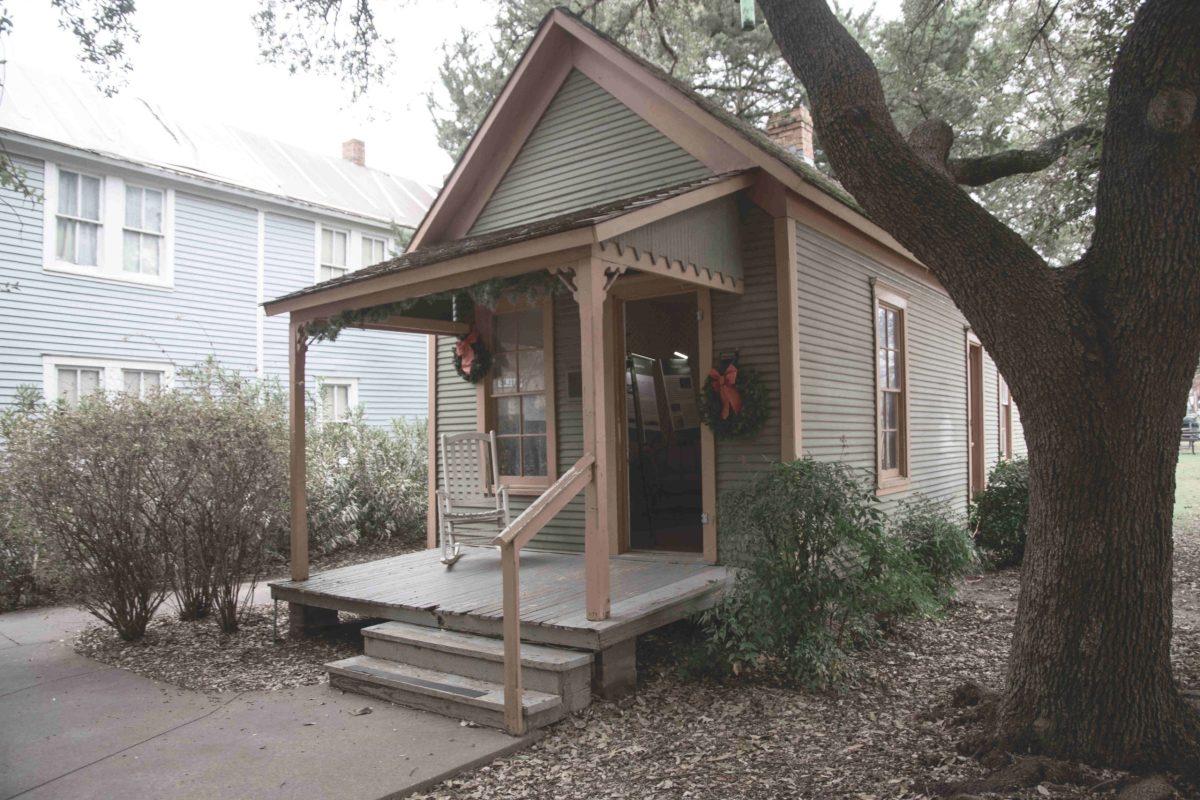The Jim Crow exhibit in Old City Park is open until Feb. 23, revealing the history behind the pre-gentrified Black community of Dallas.
Old City Park houses a collection of historic houses, including the Shotgun House, where the exhibit is located. The exhibit was developed under Assistant Professor of History Whitney Stewart, as well as graduate students taking her public history course in AHT. This semester, Stewart and graduate students strive to present Dallas’ forgotten Black communities that came before the explosion of businesses and a highly gentrified community.
The exhibit focuses on centralizing the impact of the history of Jim Crow laws in Dallas and how they promoted a racial hierarchy that favored white people over Black people. These laws were rooted in continuing segregation during and after Reconstruction, which followed the Civil War. This led Black communities to be segregated into specific neighborhoods in Dallas since they were not allowed to acquire housing anywhere else. Since Black people were denied equal aid from city and state governments, they were forced to be self-sustaining, resulting in a thriving community that has since been developed over.
“The history of race relations and the history of Dallas has been built over, has been paved over, and when we get to actually know this real history, we can begin to see the layers of our city’s history and better understand why we are where we are today,” Stewart said. “Because we don’t live in a racial utopia in the city of Dallas, and you know there is a reason behind that. If we try to hide that history, if we try to pave it over, then we’re doing ourselves a disservice to try to understand where we are today.”
The graduate students and Stewart spent the second half of their course creating and installing the exhibit with the help of AHT’s financial resources and counseling Old City Park for information on the Shotgun House. They spent a vast amount of time choosing which artifacts and panels to include in this exhibit and how to cater to the public sphere. The decision-making process was implemented in a collaborative manner, giving students a role in opening an original history exhibit.
“We all ended up with a much better knowledge of what it means to be a practicing public historian, which means being able to do hands-on history with the public that I, and now my students, are very passionate about,” said Stewart
The exhibit caters to the Shotgun House’s floorplan, telling the story of the house’s role in the former working-class neighborhood and more broadly explaining Black Dallas residents’ history. The exhibit starts with an introduction summarizing
three rooms that present history chronologically. The first room focuses on the 1870s to the 1910s, the second room details the 1920s to the 1930s and the last room shows the 1940s to the present. Beyond this, there is a breakdown of history beginning with explaining the house, the neighborhood and Dallas as a whole. The exhibit also discusses the future of this threatened architecture style.
“It has been a target of developers and gentrification that has really wiped it away from much of the cities landscape,” Stewart said. “But there are people who are really making sure that we preserve and record the history of these houses…”
The exhibit pays homage to these forgotten communities and strives to deliver the historical significance of Dallas’ background as it relates to the Black community.
“I’ll tell you one thing my students told me that they learned and that they walked away from doing this exhibit,” Stewart said. “So many of us walk through Dallas and we don’t know the history around us, and more than that, there’s a history that we can’t see. You don’t look around you and realize that for nearly a century, this was part of Black Dallas, that this was a thriving black community that was then decimated by what the local government and what developers wanted, mostly for white Dallas sites.”





